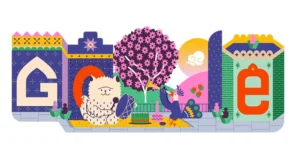Teaching Aid: How to Design Materials for Language Learners
By TOI Staff
October 28, 2022
Update on : October 28, 2022

An instructor or teacher needs to consider some basic concepts before deciding to design materials as every learner is different. All materials may not be proved equally good for all the learners. Considering the positive effects on learners, teachers take the responsibility to design materials including course-related books, grammar books, videos, youtube, newspapers, emails, audio clips, and so on. However, for language teaching purposes, materials can be anything that facilitates language learners. A teacher will be satisfied with the materials he/she designs for learners, especially language learners.
Materials design is practical work. So many things are involved in it. Materials should put an effect on learners. It must draw learners’ attention, curiosity, interest, and attraction. Materials may differ considering the place and people as there will be different outcomes from a different one. For example: “A context of Japan or Europe can give an alien atmosphere to a learner of India. Materials are designed for learners so they should not be uncomfortable for the learners. Materials should be designed to help learners learn not to test them. They should feel that the materials are designed considering the social and cultural aspects of society. Bringing out creativity and analytical ability and fostering the imagination of learners are among some principles of materials design. However, it’s not an easy task to complete as a teacher needs to keep in mind that the tasks for the learners should not be so easy that they always stay in their comfort zone. Materials should be designed as these will push the learners to come out of their comfort zone. Apart from materials design, learners must be mentally ready for learning.
Krashen is most widely known for his “comprehensible input” hypothesis, which suggests that learners acquire language by taking in and understanding the language that is “just beyond” their current level of competence. Krashen suggests that natural communicative input is the key to designing a syllabus, ensuring in this way that each learner will receive some ‘i + 1’ (already learned + available for learning) input that is appropriate for his/her current stage of linguistic competence. Materials should be designed considering learners’ attention to linguistic features to learn those and learners’ use of target language features and that of native speakers. Different learners learn in different styles.
For some learners explicit grammar teaching may be suitable, on the other hand, reading a story with grammar features without explicit teaching of grammar can be fruitful. Considering different learning styles is a must to do as we can’t ask a fish to fly or ask an elephant to draw a picture. Materials design or providing tasks to the learners should be within their capability. Some learners may prefer visual learning more than listening to a language. Some may do vice versa. In many cases, learners prefer the Total Physical Response (TPR) method, some learners are dependent learners and some are independent learners. Learners’ intellectual, aesthetic and emotional involvement is also very important while designing materials.
After having a brief idea about the particular issue, we can say that the combination of beliefs and expectations of both teachers and learners is important in materials design. Learners’ motives, emotions, attitudes, etc. play a vital role in materials design.
















